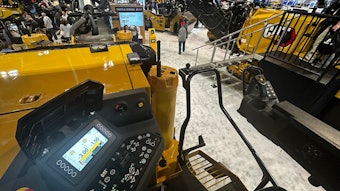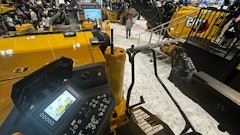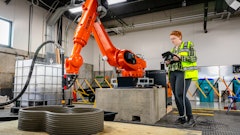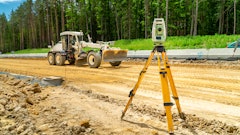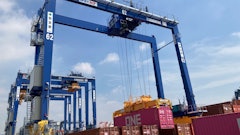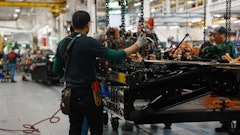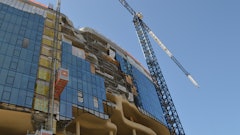
If you have seen one construction project, you have definitely not seen them all. One of the biggest differences has to do with where the project takes place. In a big city, contractors can usually count on adequate public utility connections, a ready supply of subcontractors, high-quality roads, reliable cellular connections, and local governments with enough technology, staff and site inspectors to support a project. That’s not the case for projects taking place in sparsely populated and often rugged rural lands. Working in rural areas can be very rewarding because of the impact that a new project can have, but it takes good planning, the right attitude and willingness to take charge of your own communication needs.
That third factor is the one that most construction companies have the least experience with, so it can seem daunting. But the essentials of connectivity – whether between people or between devices in an Internet of Things (IoT) solution – can be simpler and cheaper than you think.
Text and Location
Here’s an example. A leading construction company has contracts with energy providers to install, inspect and maintain power lines, poles and structures at thousands of locations. To meet the safety requirements for lone and remote workers, the company equips its staff with GPS messengers – small, handheld devices designed for long battery life and rugged use. Both the devices and airtime are affordable enough for widespread deployment. Instead of voice, they send short text messages with a GPS location tag. Workers use them to check in at each location and report on progress, but they can be critical in emergencies. One lone worker became dehydrated while hiking into an inspection site. He used the SOS feature, which summoned the nearest search and rescue team (using his GPS location) to treat him with fluids and airlift him out of danger.
That simple GPS data is a powerful tool for managing far-flung operations. Another construction company needed a way to improve on pen-and-paper tracking of its vehicles and heavy equipment as they moved from project to project. It installed small solar-powered asset trackers – some as small as a golf ball – that sent the GPS coordinates on a regular schedule the company determined. The location data, displayed on a secure, web-based digital map, gave the company its first true visibility of operations. That set off a big increase in how efficiently the company deployed its resources, which cut spending on equipment rental and transportation costs.
Asset Protection
If you manage assets that are mobile – and every construction company does – theft is too often a cost of doing business. It is also another part of your operations where location data can make a big difference.
Sometimes that theft is organized. In one rural county, heavy equipment dealers began experiencing break-ins and theft of their equipment. They had no real anti-theft measures in place and could only watch the security footage of thieves driving away with the goods. By comparing notes, however, dealers came to believe they were dealing with an organized and disciplined gang. Dealers who had not been hit yet bought satellite asset trackers and attached them to equipment in inconspicuous spots. They also set up their online map with geofencing, a built-in feature that defines an area where the tracker is supposed to be and triggers an alert if it moves outside that area.
When thieves broke into the next dealership and drove equipment away, mobile phones lit up with alerts. The dealer had time to call police and direct them right to the thieves, who were caught after a short chase. When the case came to trial, the asset tracking data helped make the case in a series of successful prosecutions.
IoT: If You’re Ready
Construction companies are achieving all these gains using technology right out of the box. But with the help of systems integrators, some go farther. The integrators embed tiny satellite transmitters in Internet of Things (IoT) systems that can monitor and test infrastructure remotely to ensure its integrity and operating condition.
One such company makes an ultrasonic sensor that can be clamped by magnet to the bottom of any fluid-filled tank and measure how much liquid is in it, from fuel and propane to water at a job site. The measurements travel over a built-in satellite transmitter to an IoT processing system, which displays each tank’s location and fluid level on a digital map. Keeping supply ahead of consumption becomes simple, and precise knowledge about fast-changing demand prevents over-buying.
IoT systems are meeting more specialized needs as well. When metallic infrastructure is in contact with the ground, it fights a never-ending battle with corrosion. To keep that under control, contractors install cathodic protection (CP) systems. They involve burying a specialized metal anode next to the metal infrastructure and connecting them by wire to a power source. Through the magic of electrochemistry, this causes the anode instead of the infrastructure to corrode. The infrastructure gains years of life, while the anode deteriorates and must be replaced.
The traditional way to manage CP systems is with site inspections, which can require significant staff time and travel cost to visit each CP test station, validate correct operation and test performance. A systems integrator developed a product to provide continuous monitoring of these CP systems with automated alerts to change in condition. The data is transmitted to the company by a coin-sized satellite transmitter (or over cellular where available) and it saves owners and operators of the infrastructure big money.
How Does It Work?
These devices and satellite transmitters deliver their value through a satellite network. A fleet of low-Earth-orbit satellites connect with two dozen ground stations on six continents, all linked by optical fiber leading to an operations center. The ops center handles customer services, manages the network, deploys digital mapping and geofencing applications and provides software from an edge application development platform.
When you are sending crews to the wide open spaces, they need to bring their communications with them. Your company also needs to be able to afford it. Satellite messaging, tracking and IoT checks both boxes, and are growing more powerful, flexible and affordable with each passing year.
